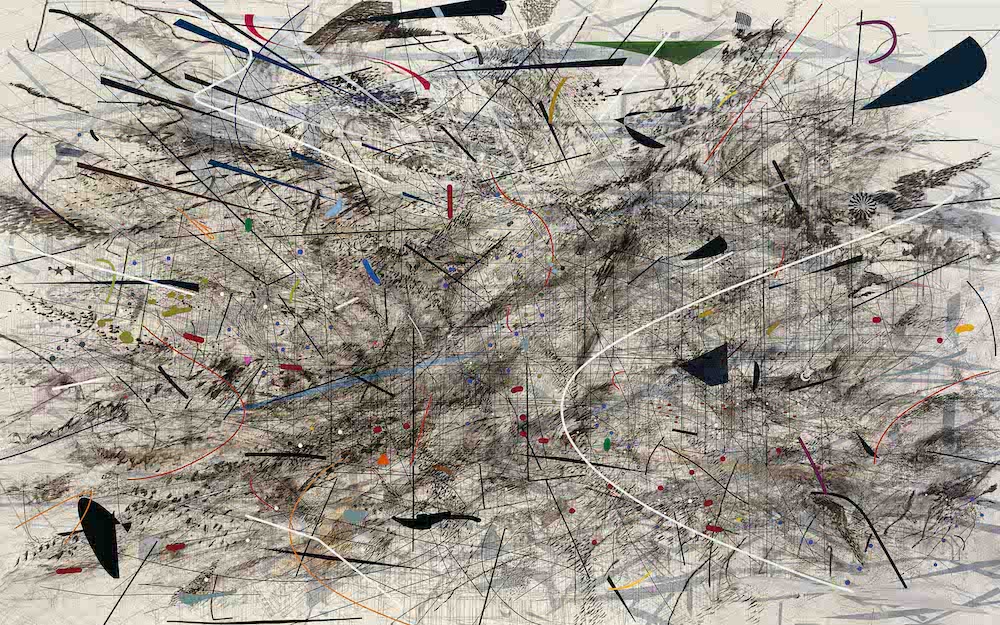Two extremely distant galaxies appear to be Flashpoint X Porn (1997)ramming into each other over and over again at speeds of over 1 million mph.
The pair — dueling it out 11 billion light-yearsaway in space— has given astronomers their first detailed look at a galaxy merger in which one impales another with intense radiation. The armed galaxy's lance is a quasar, a portmanteau for "quasi-stellar object."
"We hence call this system the 'cosmic joust,'" said Pasquier Noterdaeme, one of the researchers from the Institut d'Astrophysique de Paris, in a statement.
A quasar is a blindingly bright galaxy core — brighter than all of the galaxy's starlight combined, according to NASA. Through telescopes, these sometimes look like a single star in the sky, but they're actually beams of light from a feasting black holeat a galaxy's core. Scientists have suspected quasars may "turn on the lights" when two galaxies crash into each other. But finding direct proof has been challenging.
Not only did the new observations show how a cosmic collision helps a quasar light up, it also revealed that the quasar can be a weapon of mass destruction, snuffing out another galaxy's ability to form new stars. These findings, published in the journal Nature, may help scientists better understand how supermassive black holes can shape the fates of other entire galaxies.
SEE ALSO: Hubble spots a roaming black hole light-years from where it belongs A galaxy's quasar, right, snuffs out another galaxy's ability to form new stars in this artist's rendering. Credit: ESO / M. Kornmesser illustration
A galaxy's quasar, right, snuffs out another galaxy's ability to form new stars in this artist's rendering. Credit: ESO / M. Kornmesser illustration When astronomer Maarten Schmidt found the first quasar in 1963, it looked like a star, though it was much too far away for that to have been the source. Scientists have since learned that quasars are relics of a much earlier time in the universe.
The nearest quasarsto Earth are still several hundred million light-years away, meaning they are observed now as they were hundreds of millions of years ago. That quasars aren't found closer to home is a clue they existed when the universe was much younger. But scientists seek them out for studies because they may provide insight into the evolution of the universe.
Though the research team saw the collision as if it was happening now, it occurred long ago, when the universe was only 18 percent of its current age. That's possible because extremely distant light and other forms of radiation take time to reach our telescopes, meaning astronomers see their targets as they were in the past.
"We hence call this system the 'cosmic joust.'"
To conduct the study, an international team of astronomers used the Atacama Large Millimeter/submillimeter Array, or ALMA, and the European Southern Observatory’s Very Large Telescope, both peering up at the sky from the Chilean desert.
Their research supports a long-held theory: that galaxy mergerscan trigger quasars, and that the energy from them can alter their surroundings in powerful ways.
"Here we see for the first time the effect of a quasar’s radiation directly on the internal structure of the gas in an otherwise regular galaxy," said co-author Sergei Balashev, a researcher at the Ioffe Institute in Russia, in a statement.
The gas that would usually feed star-making activity within the wounded galaxy was transformed: Rather than being dispersed evenly in large loose clouds, the quasar's radiation clumped the gas in super tiny, dense pockets, rendering it useless for star births. This suggests the quasar's energy effectively sterilized the galaxy — at least wherever the radiation hit.
Black holesin general are some of the most inscrutable things in the cosmos. Astronomers believe these invisible giants skulk at the center of virtually all galaxies. Falling into one is an automatic death sentence. Any cosmic stuff that wanders too close reaches a point of no return.
 A wide view of the two galaxies on the verge of merging, dubbed "the cosmis joust," in the distant universe. Credit: DESI Legacy Survey
A wide view of the two galaxies on the verge of merging, dubbed "the cosmis joust," in the distant universe. Credit: DESI Legacy Survey But scientists have observed something weird at the edge of black holes' accretion disks, the rings of rapidly spinning material around the holes: A tiny amount of the material can suddenly get rerouted. When this happens, high-energy particles get flung outward as a pair of jets, blasting in opposite directions, though astronomers haven't quite figured out how it all works. It's also still a mystery as to when exactly in cosmic history the universe started making them.
The quasardidn't just affect the other galaxy. The sparring apparently allowed new reserves of fuel to flow into the galaxy hosting the quasar, bringing fresh gas within reach of the supermassive black hole powering it. As the black hole eats the material, it perpetuates the violence.
"These mergers are thought to bring huge amounts of gas to supermassive black holes residing in galaxy centers," Balashev said.
 Redux: This Cannot Be the Worst of My Days by The Paris Review
Redux: This Cannot Be the Worst of My Days by The Paris Review
 We Didn’t Have a Chance to Say Goodbye by Sabrina Orah Mark
We Didn’t Have a Chance to Say Goodbye by Sabrina Orah Mark
 The B Side of War: An Interview with Agustín Fernández Mallo by Jorge Carrión
The B Side of War: An Interview with Agustín Fernández Mallo by Jorge Carrión
 In the Green Rooms by Tove Ditlevsen
In the Green Rooms by Tove Ditlevsen
 Whiting Awards 2021: Marwa Helal, Poetry
Whiting Awards 2021: Marwa Helal, Poetry
 Whiting Awards 2021: Joshua Bennett, Poetry and Nonfiction
Whiting Awards 2021: Joshua Bennett, Poetry and Nonfiction
 Bomb Envy
Bomb Envy
 Staff Picks: Raisins, Rhythm, and Reality by The Paris Review
Staff Picks: Raisins, Rhythm, and Reality by The Paris Review
 Best robot vacuum deal: Eufy Omni C20 robot vacuum and mop at record
Best robot vacuum deal: Eufy Omni C20 robot vacuum and mop at record
 Redux: A Window like a Well by The Paris Review
Redux: A Window like a Well by The Paris Review
 In the Green Rooms by Tove Ditlevsen
In the Green Rooms by Tove Ditlevsen
 Presenting the Finalists for the 2021 PEN America Literary Awards by The Paris Review
Presenting the Finalists for the 2021 PEN America Literary Awards by The Paris Review
 Exceptionally rare radio sources detected in the distant universe
Exceptionally rare radio sources detected in the distant universe
 Whiting Awards 2021: Ladan Osman, Poetry
Whiting Awards 2021: Ladan Osman, Poetry
 Blueprints for Another World by The Paris Review
Blueprints for Another World by The Paris Review
 Redux: Come, Be My Camera by The Paris Review
Redux: Come, Be My Camera by The Paris Review
 NYT Strands hints, answers for May 5
NYT Strands hints, answers for May 5
 Whiting Awards 2021: Marwa Helal, Poetry
Whiting Awards 2021: Marwa Helal, Poetry
A Brief History of Red: How Artists Made the Elusive ColorWhy TikTok is urging you to ditch anything 'low vibrational'Redux: Lucia Berlin, Eileen Myles, Caleb CrainRedux: Elizabeth Bishop, Evan S. Connell, and Diane di Prima by The Paris ReviewYour endless scrolling on TikTok could be ruining your relationshipThe Uncertain Future of the American MallThe Inventions of WitchesJohn Milton’s Strange Christmas Poem by Ed SimonJohn Milton’s Strange Christmas Poem by Ed SimonHere's a timeline of the OpenAI saga with CEO Sam AltmanYour endless scrolling on TikTok could be ruining your relationshipHow to use Instagram's Valentine's Day emoji Quick Reactions and DM animationsBest deals of the day Feb. 13: 2021 iPad, Dyson V8 Fluffy, Paramount+ gift cards, and morePuerto Rico Sketchbook: There are dead in the fieldsReading the Police BlotterWhat is subtle merch, and why is it all over TikTok?Not even Paris Hilton wants to advertise on Twitter / XBest deals of the day Feb. 14: AirPods Max, 2021 iPad, Arlo video doorbell, and moreHow Nicolas Cage memes shaped 'Dream Scenario'Puerto Rico Sketchbook: The Comic The Ritz of the Bayou: Nancy Lemann’s Shabby Find My Friends by Sophie Haigney A Laborer Called a Writer: On Leonard Cohen by Carina del Valle Schorske Genres for War: Writers in Ukraine on Literature by Zarina Zabrisky Postcards from Ellsworth by Rebecca Bengal Writing Is a Monstrous Act: A Conversation with Hernan Diaz by Rhian Sasseen Announcing the Winners of 92Y's 2022 Discovery Contest by The Paris Review Vivian Gornick Will Receive Our 2023 Hadada Award by The Paris Review On the Far Side of Belmullet by Rebecca Bengal Nobody Writes Like Nancy Lemann by Susan Minot Our Favorite Sentences by The Paris Review Cambridge Diary, 2014 by J. D. Daniels Deep Emotion, Plain Speech: Camus’s The Plague by Laura Marris More Summer Issue Poets Recommend by The Paris Review Basilica by Cynthia Zarin Why Write? by Elisa Gabbert Acte Gratuit by Alice Blackhurst The Family Is Finished: On Memory, Betrayal, and Home Decor by Menachem Kaiser On Cary Grant, Darryl Pinckney, and Whit Stillman by The Paris Review September Notebook, 2018 by Daniel Poppick
2.7565s , 10156.15625 kb
Copyright © 2025 Powered by 【Flashpoint X Porn (1997)】,Fresh Information Network